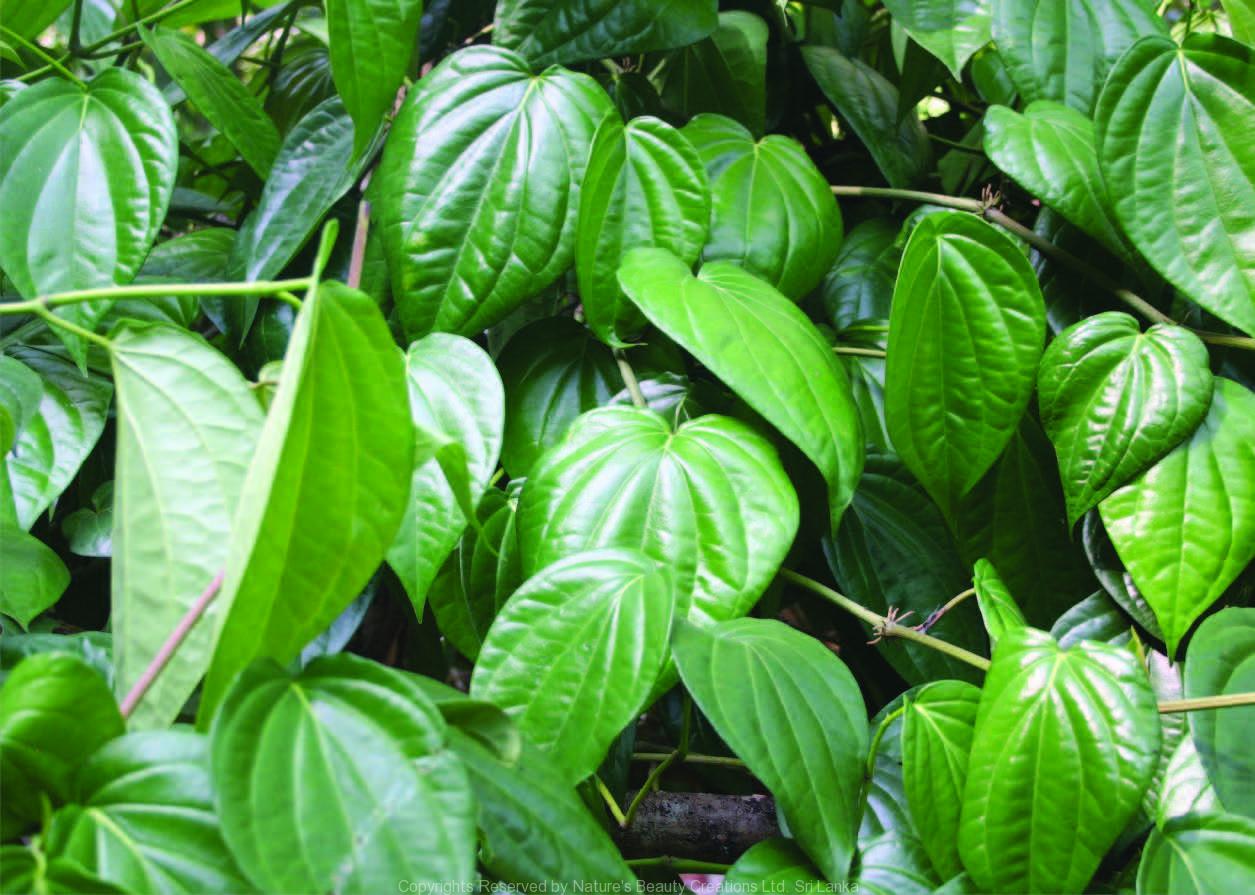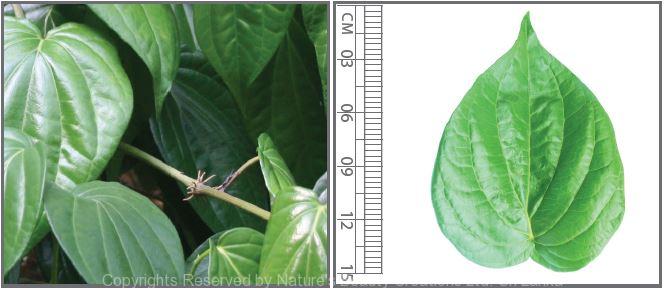

Traditional Knowledge
Useful plant parts :
Leaf
Uses in traditional medicine :
- One tea spoon of fresh leaf juice is taken after meals to cure indigestion
- Acts as an antiseptic, sialogogue, carminative, astringent, aphrodisiac, stimulant, stomachic and febrifuge
- Used in the treatment of night blindness, cough, protracted fever, smallpox, enlarged glands and lymphangitis, gastric and lung disorders, catarrh, diptheria and purulent ulcers
Scientific Research
Chemical constituents:
Lipid: ceramides, alkaloids: piperine, pellitorine, piperdardine, piperolein B, lignan: pinoresinol, piperbetol, methylpiperbetol, piperol A and B from plant; phenolics: chavicol, chavibetol, allylpyrocatechol and their derivatives, eugenol, isoeugenol, eugenol methyl ester, safrole and myrcene from leaves and essential oil of flowers
Bioactivity :
Ethanol and aqueous extract of leaves: antidiabetic, antioxidative, antiadherence towards bacterial settlers in dental plaque; chloroform extract of leaves: antifungal, anthelmintic; extract of inflorescence: cytotoxic; eugenol, isoeugenol and hydroxychavicol: nerve stimulators; alcohol extract of leaf-stalk: contraceptive; piperbetol, methylpiperbetol, piperol A and B: platelet activating factor antagonists
Clinical:
References : Arambewela, L. S. R. et al., (2005), Antidiabetic activities of aqueous and ethanolic extracts of Piper betle leaves in rats, Journal of Ethnopharma- cology, 102, 239–245. Dasgupta, N. and De, B., (2004), Antioxidant activity of Piper betle L. leaf extract in vitro, Food Chemistry, 88, 219–224. Evans, P. H. et al., (1984), Identification of Fungicidal and Nematocidal Components in the Leaves of Piper betle (Piperaceae), Journal of Agricultural and Food Chemistry, 32, 1254-1256. Jeng, J. H. et al., (1999), Effects of areca nut, inflorescence Piper betle extracts and arecoline on cytotoxicity, total and unscheduled DNA synthesis in cultured gingival keratinocytes, Journal of Oral Pathology & Medicine, 28(2), 64–71. Hwang, L. S. et al., (1992), Phenolic Compounds of Piper betle Flower as Flavoring and Neuronal Activity Modulating Agents, American Chemical Society, 3(16), 200-213. Huang, X. et al., (2010), Alkaloids and lignans from stems of Piper betle, Zhongguo Zhong Yao Za Zhi, 35(17), 2285-8. Huang, X. Z. et al., (2010), Two new ceramides from the stems of Piper betle L., Chinese Chemical Letters, 21, 433–436. Nagori, K. et al., (2011) Piper betle L: A review on its ethnobotany, phytochemistry, pharmacological profile and profiling by new hyphen- ated technique DART-MS (Direct Analysis in Real Time Mass Spectrom- etry, Journal of Pharmacy Research, 4(9), 2991-2997. Nalina, T. and Rahim, Z. H. A., (2007), The crude aqueous extract of Piper betle L. and its antibacterial effects towards Streptococcus mutans, American Journal of Biotechnology and Biochemistry, 3(1), 10-15. Philip, H. E. et al., (1984), Identification of fungicidal and nematocidal components in the leaves of Piper betle (Piperaceae), J. Agric. Food Chem, 32 (6), 1254–1256. Prabhu, M. S. et al., (1995), Effect of orally administered betel leaf (Piper betle Linn.) on digestive enzymes of pancreas and intestinal mucosa and on bile production in rats, Indian Journal of Experimental Biology, 33(10), 752-6. Razak, F. A. and Rahim, Z. H. A., (2003), The anti-adherence effect of Piper betle and Psidium guajava extracts on the adhesion of early settlers in dental plaque to saliva-coated glass surfaces, Journal of Oral Science, 45(4), 201-206. Sarkar, M. et al., (2000), The reversible antifertility effect of Piper betle Linn. on Swiss albino male mice, Contraception, 62(5), 271–274. Zeng, H. W. et al., (1997), Piperbetol, Methylpiperbetol, Piperol A and Piperol B: A New Series of Highly Specific PAF Receptor Agonists from Piper betle, Planta Med, 63(4), 296-298.
Copyrights Reserved By
Natures Beauty Creations



